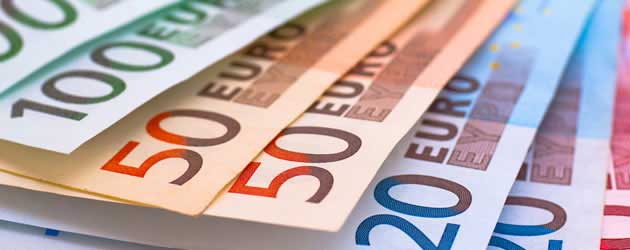
Yesterday’s unexpectedly dovish statement from the European Central Bank, which involved a pledge that its ‘monetary policy stance will remain accommodative for as long as necessary’, saw the Euro decline notably against the US Dollar and weaken against several of its other main rivals. However, the common currency was able to gain on a bearish Pound as the Bank of England’s pessimistic policy statement saw Sterling slide.
The Euro to Pound Sterling Exchange Rate was in the region of 0.8604 as of 11:55 GMT
Although German factory orders data disappointed expectations during the European session, the Euro was largely able to retain its advance on the Pound.
Economists had forecast that German factory orders would gain by 0.1 per cent in May (year-on-year) after declining by 0.4 per cent in April.
However, factory orders in the Eurozone’s largest economy actually fell by 2.0 per cent. April’s decline was revised to 0.3 per cent.
Month-on-month factory orders were down 1.3 per cent, despite economists expecting a 1.2 per cent increase.
The unforeseen decline is a concerning development for the largest economy in the Eurozone.
Economist Heinrich Bayer said of the result: ‘The economic picture for Germany is still affected by the uncertainty in the Euro-area economy. But confidence is improving and growth is returning. The situation could definitely be worse.’
Similarly, one Frankfurt based industry expert asserted: ‘The German economy probably grew quite significantly in the second quarter and will continue to grow throughout the year. The ECB’s decision will help calm markets and support a recovery in Europe and in Germany.’
The Euro to Pound (EUR/GBP) exchange rate hit a high of 0.8633 pence per Euro
After the figures were released the Euro was little changed against the Pound and continued to trade below 1.29 against the US Dollar.
The EUR/USD pairing remains under pressure prior to the publication of employment figures for the US.
Industry experts are expecting that the non-farm payrolls report will show that the US economy added 165,000 jobs in June and that the unemployment rate in the world’s largest economy fell from 7.6 per cent to 7.5 per cent.
If the data is in line with these forecasts, and drives investors to speculate on the likelihood of the Federal Reserve tapering stimulus in the months ahead, the Euro could weaken further against the US Dollar.
Euro fluctuations are also being inspired by news from Greece and Portugal. While the Greek talks with the Troika continue the Portuguese President has spoken of the recent political drama and issued a warning that if internal events and external concerns continue Portugal may not be able to return to bond markets as planned in 2014.
Anibal Cavaco Silva was quoted as stating: ‘The incapacity of returning to the markets in 2014 could even be a result of the Troika not being ready to sign off in a positive way on the rescue package.’
Although it was intimated last night that the Portuguese government had developed a ‘formula’ to keep the political factions together, there has still been no world on what exactly the ‘formula’ entails.
The biggest piece of Eurozone news on the cards for next week is the publication of minutes from the ECB’s latest policy meeting.
Current Euro (EUR) Exchange Rates
< Lower > Higher – Little Changed
The Euro/US Dollar Exchange Rate is currently in the region of: 1.2879 <
The Euro/Pound Sterling Exchange Rate is currently in the region of: 0.8604 >
The Euro/Australian Dollar Exchange Rate is currently in the region of: 1.4063 <
The Euro/ New Zealand Dollar Exchange Rate is currently in the region of: 1.6495 >
The US Dollar/Euro Exchange Rate is currently in the region of: 0.7765 >
The Pound Sterling /Euro Exchange Rate is currently in the region of: 1.1618 <
The Australian Dollar/Euro Exchange Rate is currently in the region of: 0.7113 >
The New Zealand Dollar/Euro Exchange Rate is currently in the region of: 0.6079 >
(Correct as of 11:55 GMT)

Comments are closed.